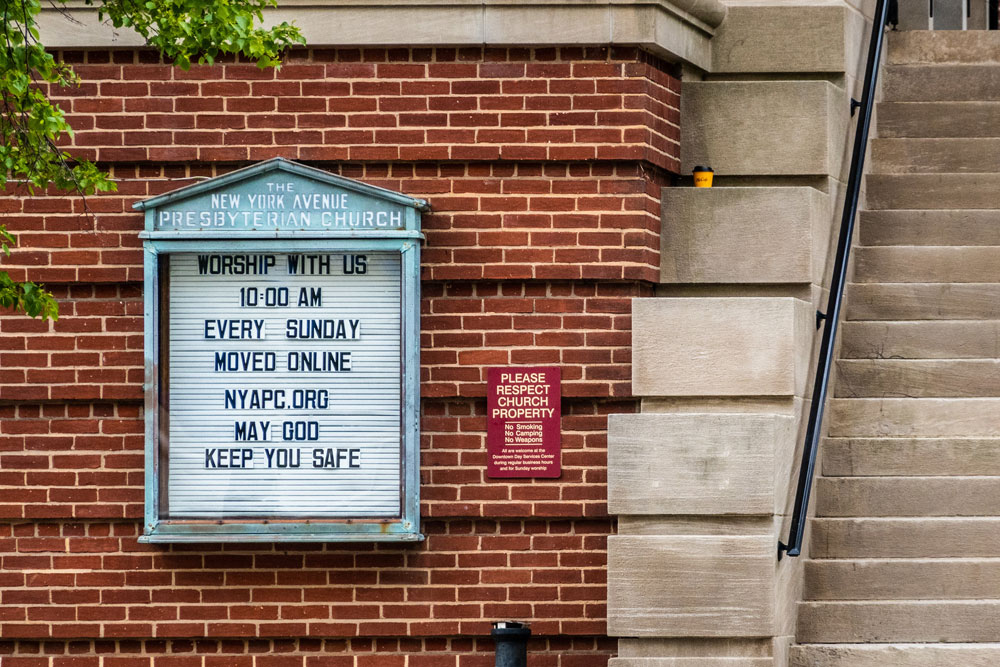
November 26, 2020; Washington Post, Wall Street Journal, Reason, and New York Times
On the eve of Thanksgiving, we were given a glimpse—perhaps more—of what the “newly configured” US Supreme Court will be like. The picture was fairly clear, and there were no surprises. In a 5-to-4 ruling (with Chief Justice John Roberts, Jr. joining the three liberal justices in dissent) the Court blocked New York Governor Andrew Cuomo’s pandemic-related restrictions on houses of worship, reversing lower court decisions. Newly appointed Justice Amy Coney Barrett was key in this ruling and may have even written the unsigned decision.
This was a case for which the Court did not need to issue a ruling, as the issues at dispute had been rendered moot for the time being since the religious institutions raising the claims no longer faced the disputed occupancy restrictions. So why did the Court hear the case anyway?
The case was about the governor of New York setting attendance limits on houses of worship and basing those limits on the intensity of the pandemic in the area where the church, synagogue, mosque, or place of worship was situated (ten people in red zones, 25 in orange zones, and more in yellow zones). The lawsuit was brought by the Roman Catholic Diocese of Brooklyn and Agudath Israel of America, which sued on behalf of Orthodox Jewish synagogues. They claimed religious discrimination under the First Amendment and stated that their places of worship were singled out for especially harsh treatment not incurred by businesses in the same zones that were deemed “essential” and which are allowed to operate without capacity limits.
Writing for Reason, a libertarian journal, Jacob Sullum quotes the majority opinion extensively:
A health department official testified about a large store in Brooklyn that could “literally have hundreds of people shopping there on any given day.” Yet a nearby church or synagogue would be prohibited from allowing more than 10 or 25 people inside for a worship service. And the Governor has stated that factories and schools have contributed to the spread of COVID–19, but they are treated less harshly than the Diocese’s churches and Agudath Israel’s synagogues, which have admirable safety records.
Sign up for our free newsletters
Subscribe to NPQ's newsletters to have our top stories delivered directly to your inbox.
By signing up, you agree to our privacy policy and terms of use, and to receive messages from NPQ and our partners.
For his part, Roberts noted in his opinion that Cuomo has already given the religious institutions what they had requested. “The governor might reinstate the restrictions. But he also might not,” the chief justice wrote. “And it is a significant matter to override determinations made by public health officials concerning what is necessary for public safety in the midst of a deadly pandemic.”
He was backed up and reinforced by Justice Stephen Breyer, writing for his fellow liberals on the Court, “The nature of the epidemic, the spikes, the uncertainties, and the need for quick action, taken together, mean that the State has countervailing arguments based upon health, safety, and administrative considerations that must be balanced against the applicants’ First Amendment challenges.”
But perhaps most to the point was the opinion of Justice Sonia Sotomayor, who cut to the quick in saying, “Justices of this court play a deadly game in second guessing the expert judgment of health officials about the environments in which a contagious virus, now infecting a million Americans each week, spreads most easily.”
It was Justice Neil Gorsuch who most directly challenged Roberts, taking on the chief justice’s earlier opinion in the California case South Bay Pentecostal Church v. Newsom. In that case, Roberts contended that government officials, in consultation with scientific experts, were better positioned than judges to make public health opinions. Gorsuch disagreed, and wrote, “Even if the Constitution has taken a holiday during this pandemic, it cannot become a sabbatical. Rather than apply a nonbinding and expired concurrence from South Bay, courts must resume applying the Free Exercise Clause. Today, a majority of the court makes this plain. We may not shelter in place when the Constitution is under attack. Things never go well when we do.”
Interestingly, the most senior members of the Court, other than Breyer, remained silent, other than signing on to the majority opinion. Justices Clarence Thomas and Samuel Alito took a back seat to their younger and newer conservative colleagues.
This case may lay groundwork for future religious freedom cases. After all, this particular case was moot from the beginning. As Governor Andrew Cuomo told the press, “It’s irrelevant from any practical impact because the zone that they were talking about has already been moot. I think this was really just an opportunity for the court to express its philosophy and politics.”—Carole Levine













